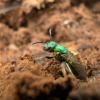I have caught 2 formica queens during the last few days of July. One of them is the Formica subsericea queen and the other is unidentified. I brood boosted them with subsericea brood since they were some of the few formica queens I caught and I really wanted them to survive. They have since then laid eggs and gotten pupae. I fed them their first meals today, which was hummingbird nectar.
Here are some pictures,
Both queens have turned very physogastric after drinking the nectar.
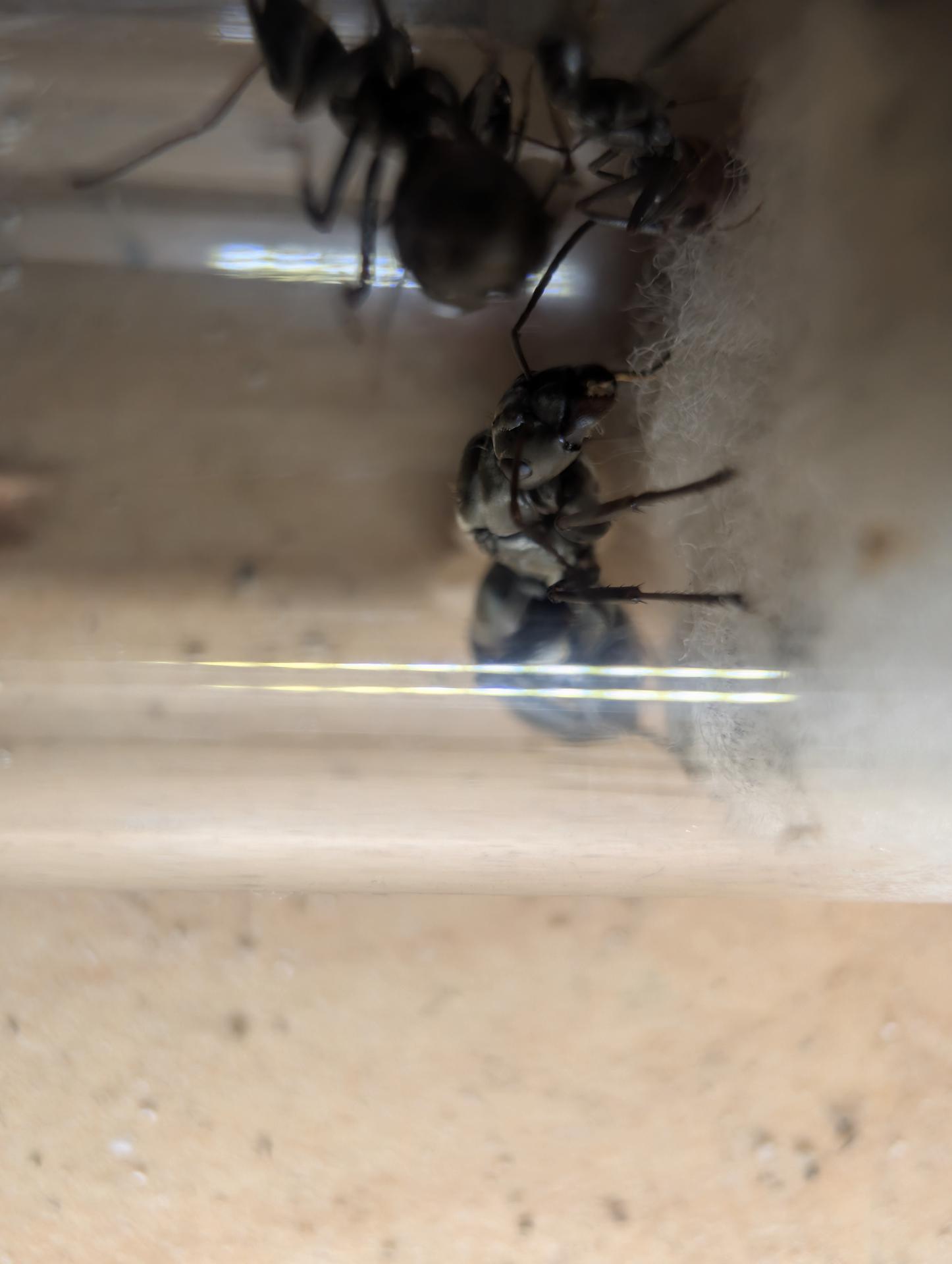
The queen on the top is actually a camponotus queen that also just got nanitics, the bottom one is the formica.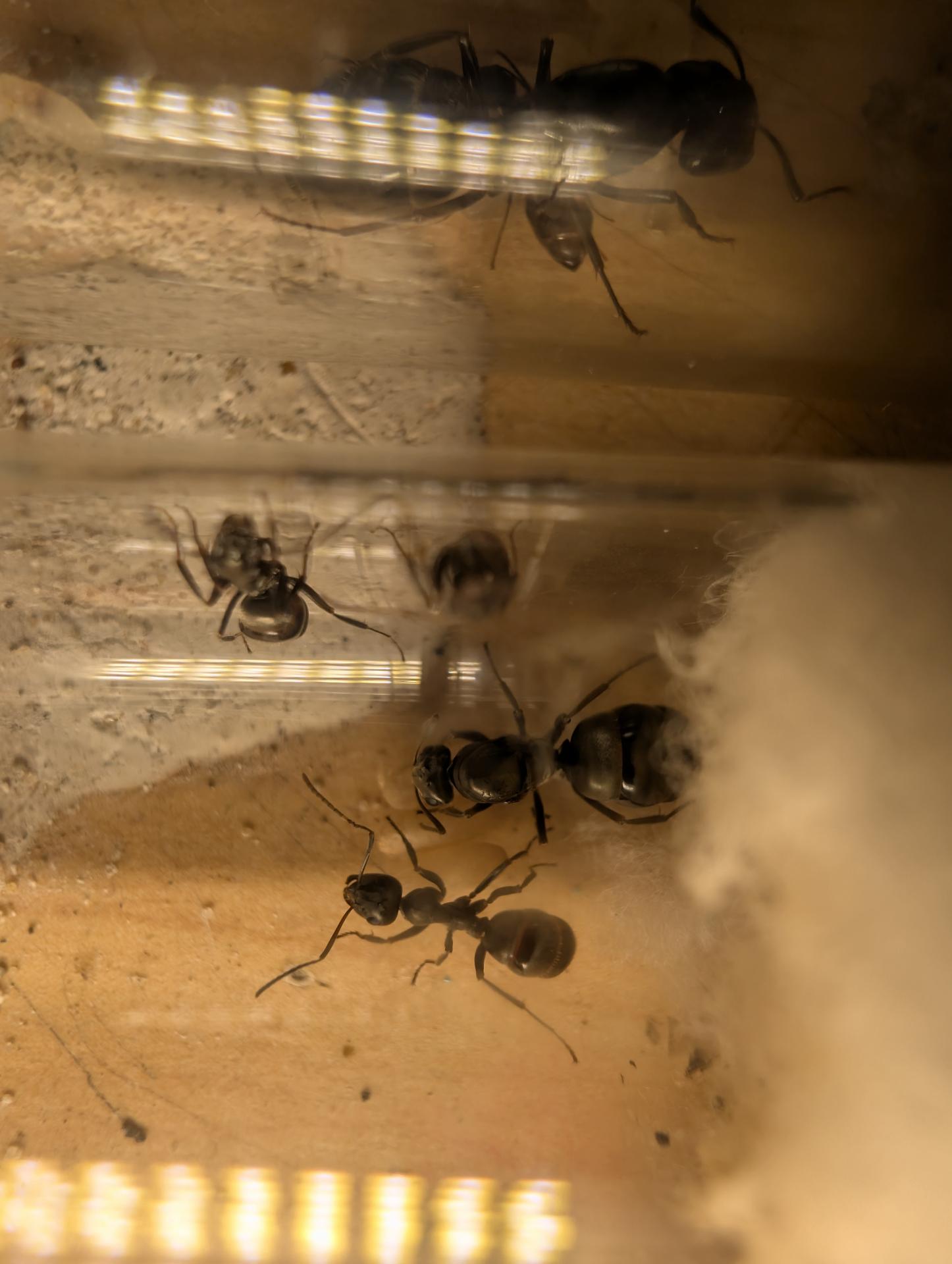
You can see both queens side by side in this photo.
Notice the size difference between the subsericea and the unidentified Formica.

As some of you may know from reading the previous journal, this is my Formica pallidefulva colony. 
They have since then grown to be about 15 workers and have multiple pieces of brood.
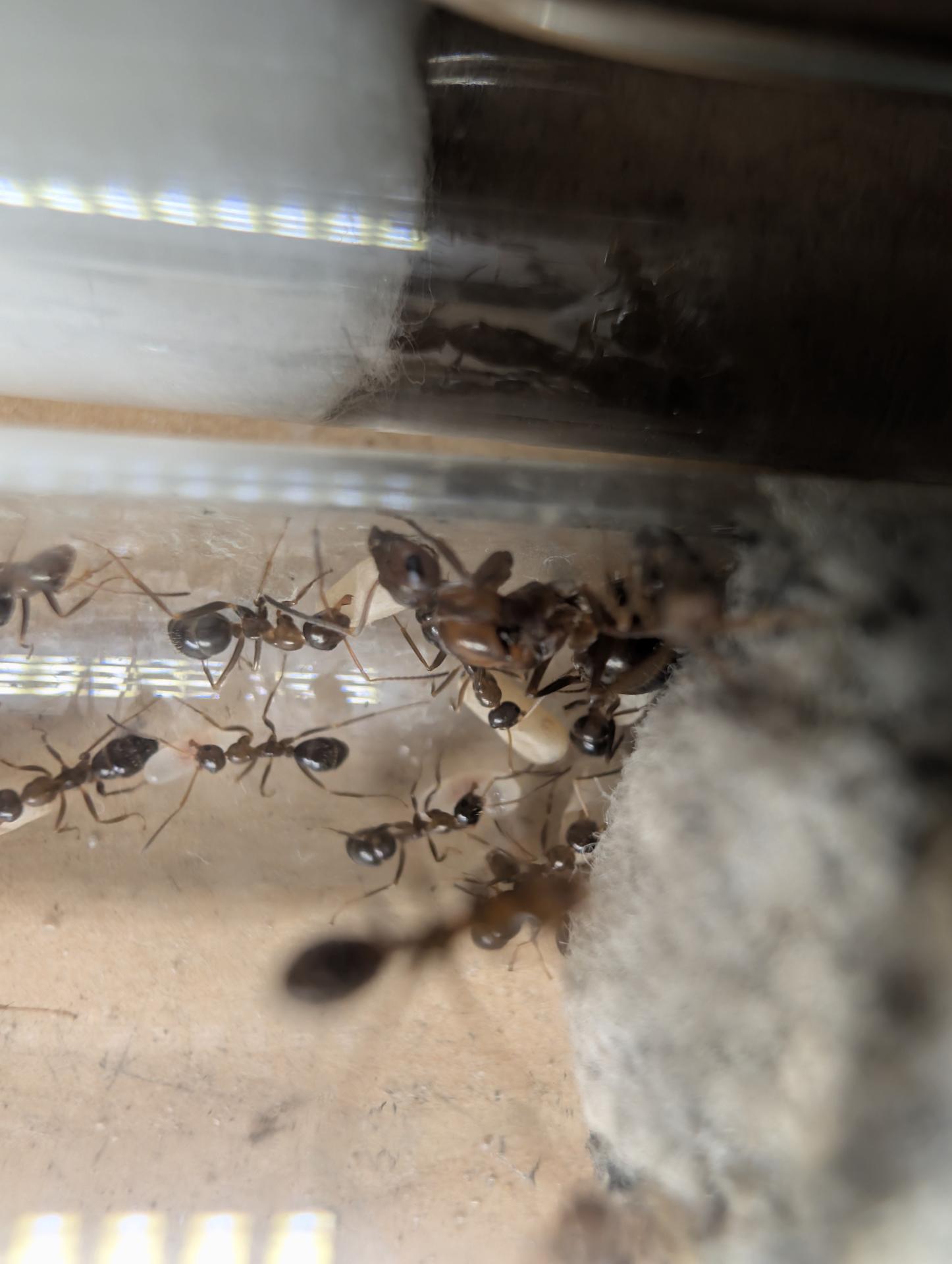
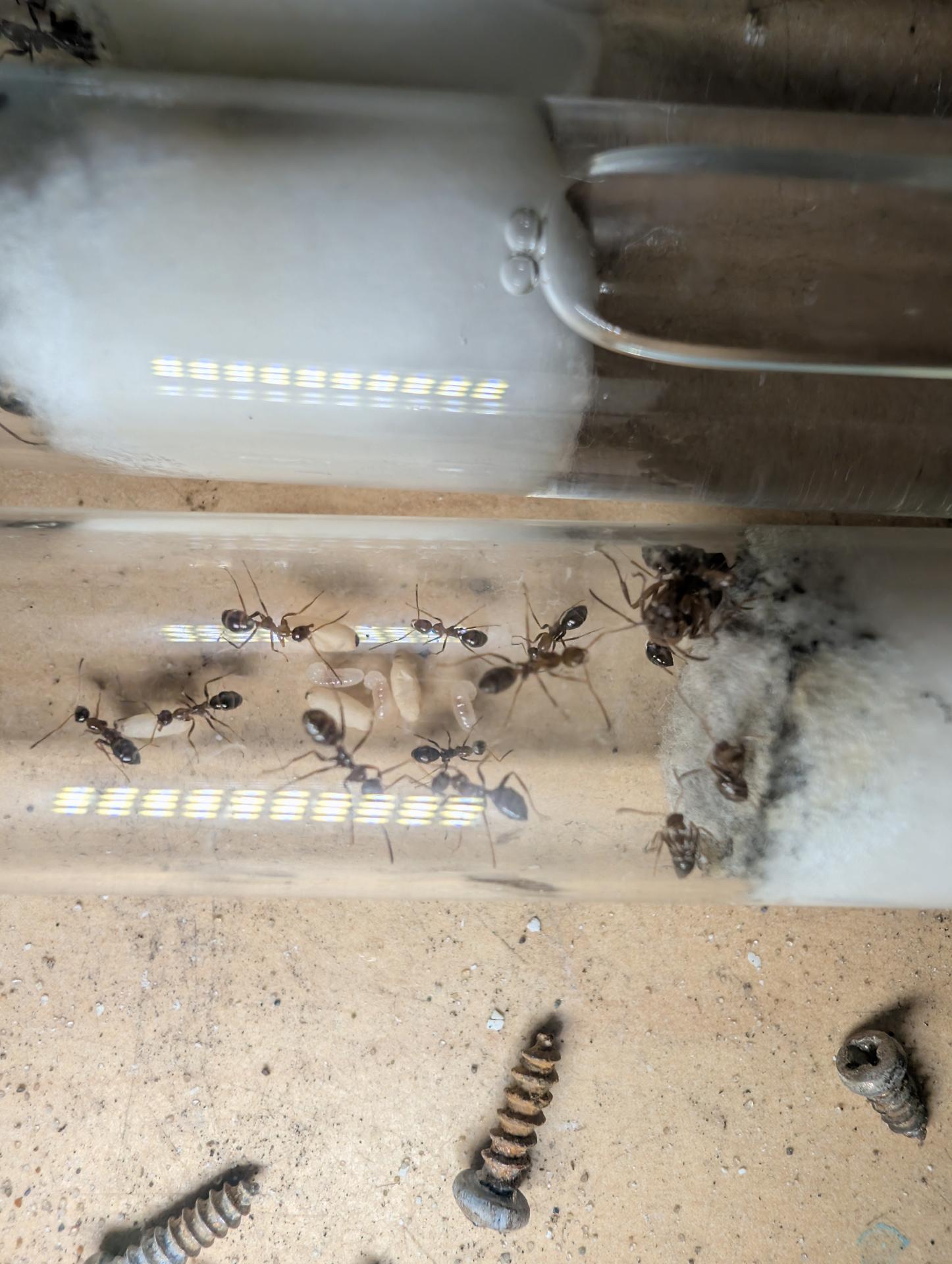
(please ignore the rusty screws)

